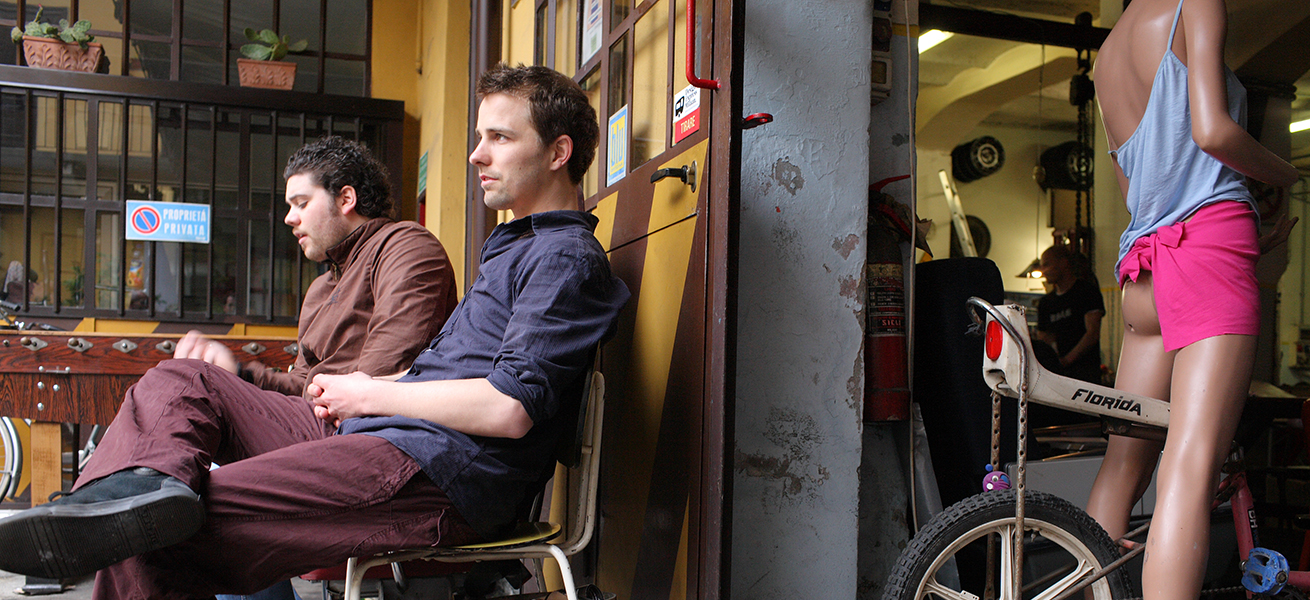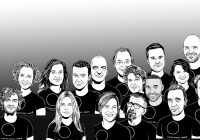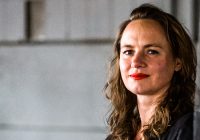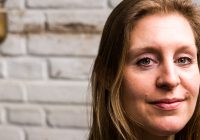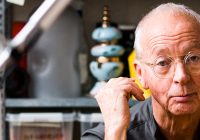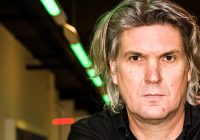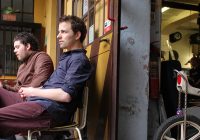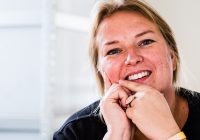Text: Monique van Empel
10 years of Dutchies in Milano
Bravura, Beer & Business
Michiel’s egg, Maarten’s circus, Hans’ cannon. But also: Rossana’s glasses and Ikea meatballs. For me, Milan’s international furniture fair is a wonderful journey of discovery, year in, year out. In addition to the Fiera, I visit picturesque spazi and showrooms, roof gardens and basements, garages and galleries, warehouses and pallazi. Mainly on the lookout for The Dutchies, who have been high-profile for many years now: thoughtful and provocative, original and innovative, but also sustainable and circular, critical of the social structure and with a social conscience. My personal highlights of the past ten years?
How difficult could it be to write an article about my personal highlights of ten years of Milan? And one focussing entirely on Dutch Design – how chauvinistic – at that. Well, it was not easy, I can tell you. Because I have been going for almost thirty years. Many memorable highlights turned out to be from before 2009. Take, for example, the colourful flower show by Niels van Eijk & Miriam van der Lubbe for the Flower Council Holland. That was in 2006, but still fresh in my memory. Models in beautiful flower dresses walked in front of Superstudio Più. And they were sweltering! Of course, the low point that year was the burglary at Tuttobene, where Basten Leijh’s Sandwichbike, among other things, was taken for a ‘test drive’. I preferred that daft business when the Natwerk boys drove their bright red Drive by Design bus over the Alps and parked it on the square in front of the Duomo, until the police kindly requested they leave (and fined them in the process). For me, that was the thing of 2005. Ah well, no sense in going that far back, but I just wanted to mention it.

Monique van Empel
Maarten Baas
Maarten Baas is someone who has been putting on high-profile shows since his début. His designs are on the cutting edge of design and art. His shows vary from dry to completely over the top. And his locations range from a regular apartment to a garage in which a full screen-printing workshop had been set up. Garages are always a favourite with Dutch designers. Take, for example, Autoficcina in Lambrate or the car park in Tortona where Tuttobene hosted a few shows. Right, back to Baas. After Smoke and Clay, he became the centre of attention, both from the international press and from furniture manufacturers and gallery owners. As had happened to Marcel Wanders before him, Baas quickly became a mega star, a hype, and so it was high time for him to take a step back. This year, therefore, he launched his cheapest design ever: the Analog Digital Clock app that everyone could download for 99 cents, and was broadcast live on TV in a rented apartment in Lambrate. No bustle, no fuss, just a relaxed week in Milan for Baas. I thought: more people should do that. A year later, Baas spared no expense with what looked like a carnival. A brass band, a merry-go-round with Baas chairs, carnival mirrors, and a clown here and there. It was really a loud ‘protest’ against the superficiality of Milan. And, again, he succeeded in making a strong statement. Even more attention and praise was lavished on his 2017 presentation with Hans Lensvelt: ‘May I have your attention, please’, an installation set up around the 101 chair that Baas had designed for Lensvelt, in 101 variations, for as many personal opinions and tastes. For this installation at Ventura Centrale, Lensvelt won the prestigious Milano Design Award, Best Concept.

Maarten Baas presenting in a garage in Via Voghera, 2008. Photo by Boudewijn Bollmann
Hans Lensvelt
In 2016, Hans Lensvelt received his first Milano Design Award, for his Boring Collection together Project EGG by Michiel van der Kley made of 4,670 3d printed stones, Ventura Lambrate 2014. 10 years of Dutchies in Milan with Space Encounters. It was not so much for the contract furniture itself, but rather for the presentation and the message. Like an anti-design statement. Because the Boring Collection was finished in super boring grey, ‘because it’s not about furniture’. Everyone at the opening night will always remember making and throwing balls of paper into the (grey) wastepaper basket. Creativity and criticism, hand in hand with humour and (self-)mockery. Also memorable was the blue World War III/Furnification show in 2013 with Atelier Van Lieshout; with an American cannon and a real army tent where you could get soup and bread. And beer, of course.
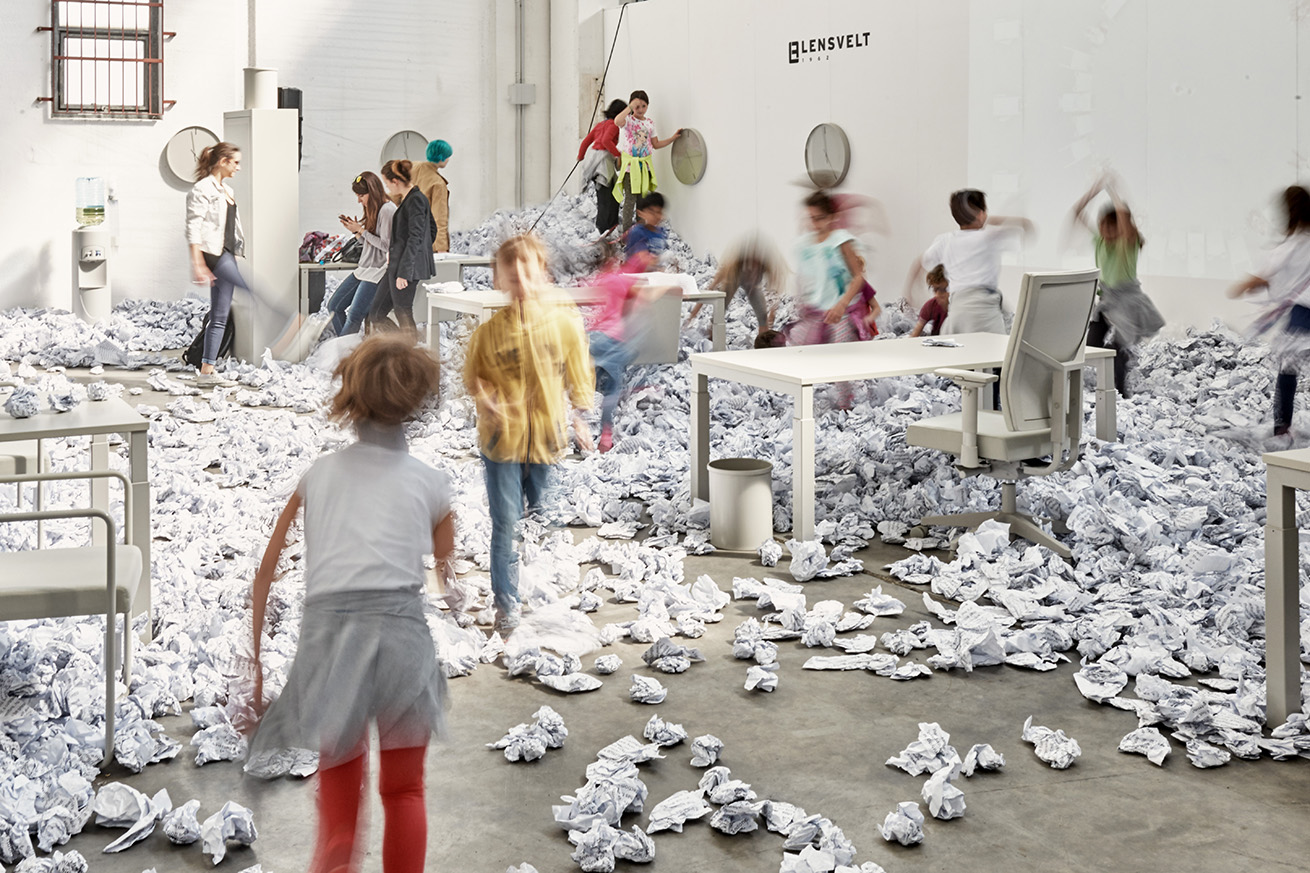
Lensvelt & Space Encounters – Boring Collection. Ventura Lambrate, Milan Design Week 2016. Photo: Jan Willem Kaldenbach

Project EGG by Michiel van der Kley made of 4,670 3d
printed stones, Ventura Lambrate 2014.
Textile
Another person who has, for many years, been able to make an impression Milan is, of course, Li Edelkoort. For me personally, she saved textiles from certain death with her Talking Textiles exhibition in 2011, as well as laying the foundation for a revaluation of craftsmanship, including weaving, embroidery, and even macramé. Her selection of objects, which focussed on innovative textile techniques, was extremely multifaceted. From fabrics, wall hangings and rugs, curtains, lighting designs, accessories and upholstered furniture, to multimedia installations, films, and digital printing techniques. The exhibition proved to be a precursor to a revival of textile within architecture. And elsewhere. It paved the way for what are now big names, including Aleksandra Gaca, Mae Engelgeer, Roos Soetekouw, Simone Post, and Claudy Jongstra. Within this same context, take, for example, the development of fish leather (Nienke Hoogvliet), the rise of macramé (Sandra de Groot and Milla Novo) or collaborations with, for example, Desso, RENS (Renee Mennen and Stefanie van Keijsteren) or Odette Ex. All presentations in Milan that brought them fame in the rest of the world.
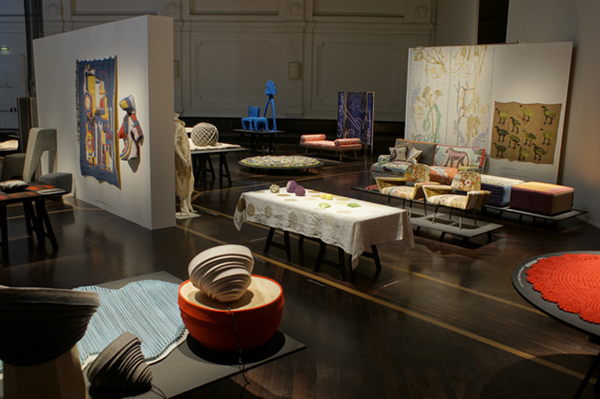
Talking Textiles, 2011
Design Academy Eindhoven
Of course, Li Edelkoort was of great importance to the international allure of Design Academy Eindhoven. Sensational exhibitions in Milan put the academy on the world map and ensured that many students found their way to the international podium. Participation of the DAE in Milan also inspired other Dutch degree programmes to take part: the Willem de Kooning Academy, the Maastricht Academy of Fine Arts & Design, Utrecht School of the Arts, Royal Academy of Art (KABK) in the Hague, Koning Willem l College in Den Bosch, Artemis, and the HMC vocational college for woodworking, furniture and interior design. I continue to find it arresting to see a good overview of the graduation work of the Netherlands’ Next Generation not in my own country, but on a few square kilometres in Milan. For me, the most memorable exhibition of the DAE was Eat Shit in DAE, focussing on the new Fool=Food department. It included girls cycling around with enormous turds on their backs, a tower of newsprint and pigeon poop, a farming game with a realistic view of the meat industry, and, of course, the Infinite Sausage machine, which conjures a three-course meal onto your plate in one cube of compressed food.
Design duos
Design Academy Eindhoven proved to be a fertile environment in another respect. Through the years, countless duos were formed that met during their studies in Eindhoven. And successful duos, almost all of whom return to Milan every year. For example, Niels van Eijk and Miriam van der Lubbe, Studio Job (Job Smeets and Nynke Tynagel), Kiki van Eijk and Joost van Bleiswijk, Stefan Scholten and Carole Baijings, Arjan van Raadshooven and Anieke Branderhorst of design label Vij5, or Ralph Nauta and Lonneke Gordijn’s Studio DRIFT, Kranen/Gille made up of Jos Kranen and Johannes Gille, and – last but not least – Wendy Plomp and Remco Craats, the founders of Dutch Invertuals.

Lonneke Gordijn and Ralph Nauta from Studio Drift. Hester van Dijk and Reinder Bakker from Overtreders W. Photos by Judith Jockel 2012.
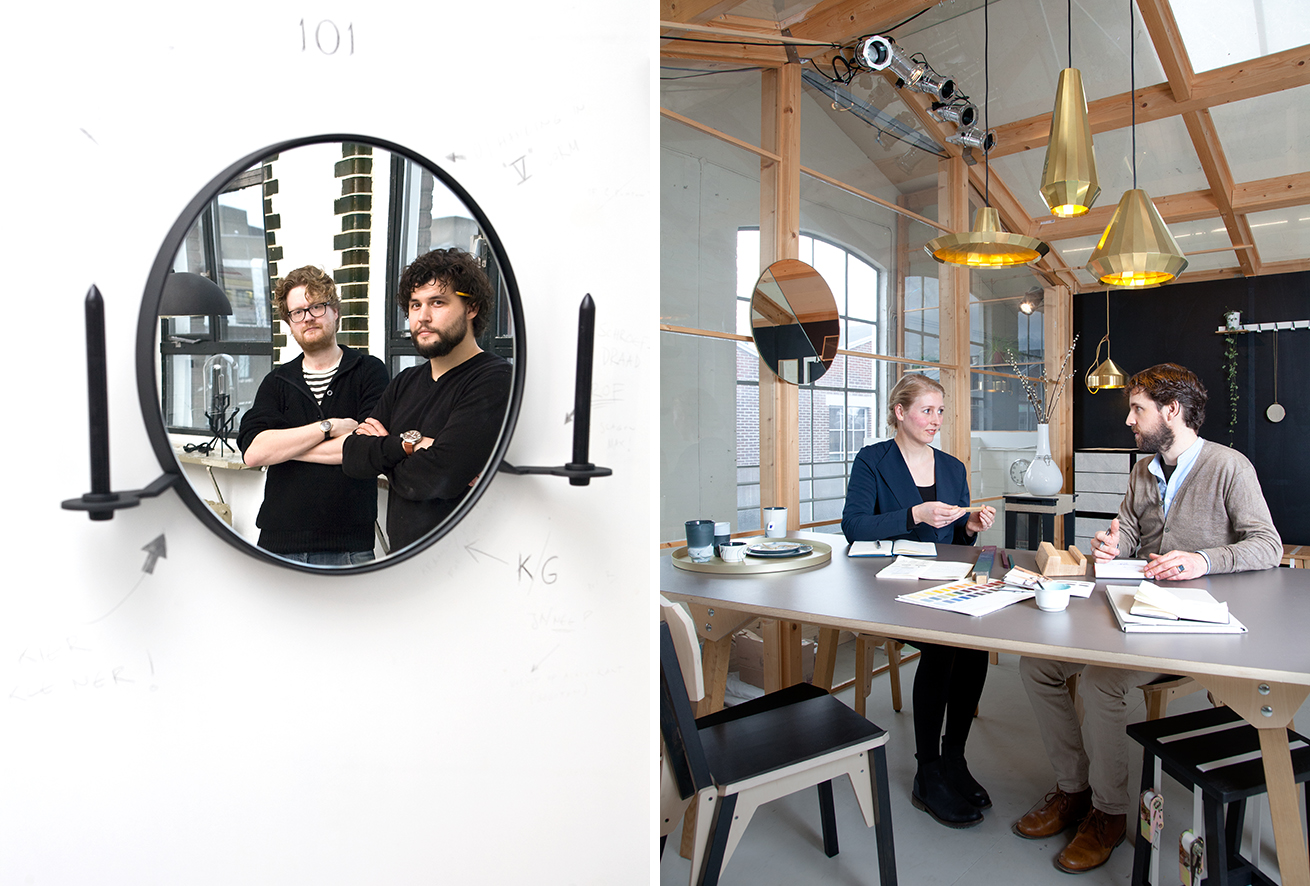
Jos Kranen and Johannes Gille from Kranen/Gille. Photo Roos Kroes, 2011. Annieke Branderhorst and Arjan van Raadshoven from Label Vij5. Photo by Daphne Kuilman, 2017
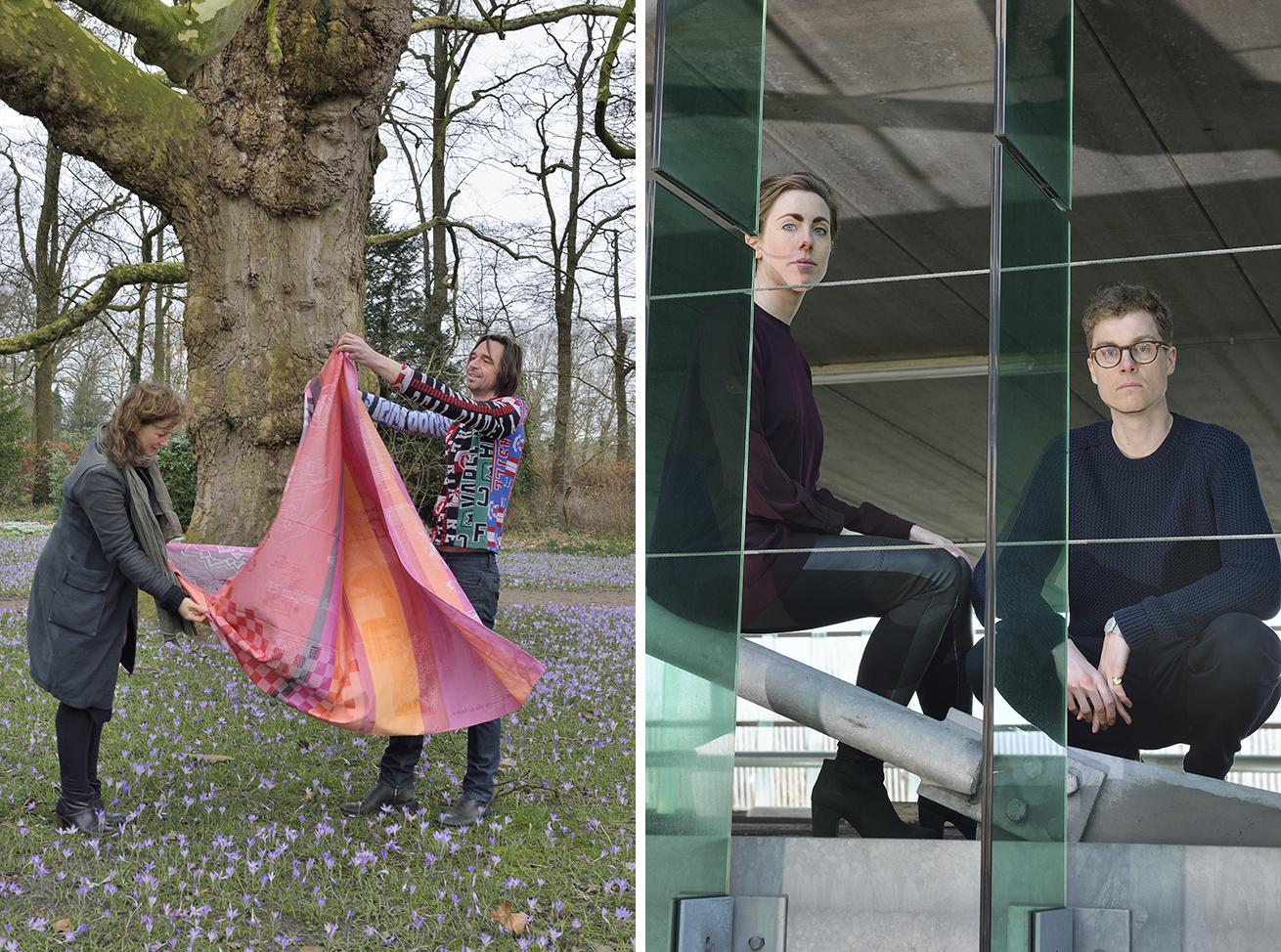
Mirjam van der Lubbe and Niels van Eijk from VEVD. Sophie Mensen and Oskar Peet from OS&OOS. Photos by Ilco Kemmere, 2014
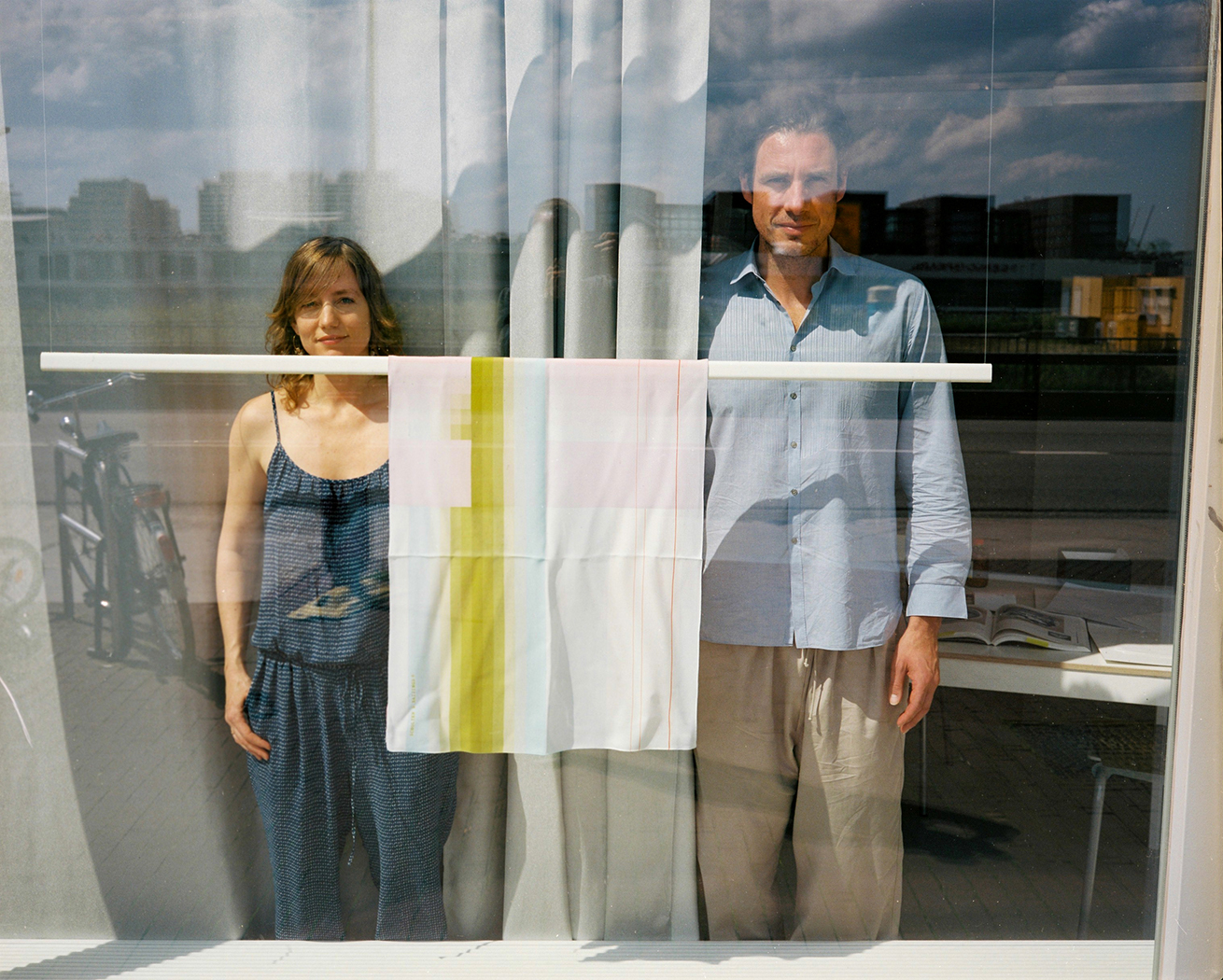
Carole Baijings and Stefan Scholten from Scholten&Baijings. Photo by Boudewijn Bollmann, 2011.
Dutch Invertuals
In 2009, Dutch Invertuals came to Milan for the first time. From the beginning, it was a collaboration between several designers from various disciplines within the industry. The immediate cause for the first collaboration was a request to represent Dutch Design at the Salone. The designs that were exhibited were not yet created specifically for the exhibition, but they were all evocative and original: take, for example, Pepe Heykoop’s brick chair, Bart Hess’ needle blanket or Lotty Lindeman’s wall bags. All later group presentations had a specific theme, for example, Transform, Harvest, Advanced Relics or Body Language. With Wendy Plomp as its curator and art director, the ever-changing collective explores and pushes the boundaries of the design profession. Social themes are discussed together and individually translated into a visual manifesto, in which the experiment dominates. All notable designers have been invited to join by Plomp, including Daphna Isaacs Burggraaf, Edhv, Jo Meesters, Laurens Manders, Mieke Meijer, RAW Color, Lex Pott, Paul Heijnen, Jetske Visser, OSΔOOS, Jeroen Wand, Jólan van der Wiel, Kristie van Noort, Jelle Mastenbroek, Alissa & Nienke, as well as – more and more – foreign designers. The patience, attention to detail, and passion with which Wendy talks you through the designs is unprecedented. The parties on Friday nights, among the many ‘radical thinkers’, are always a serious assault on my already hoarse voice. What a fantastic network!
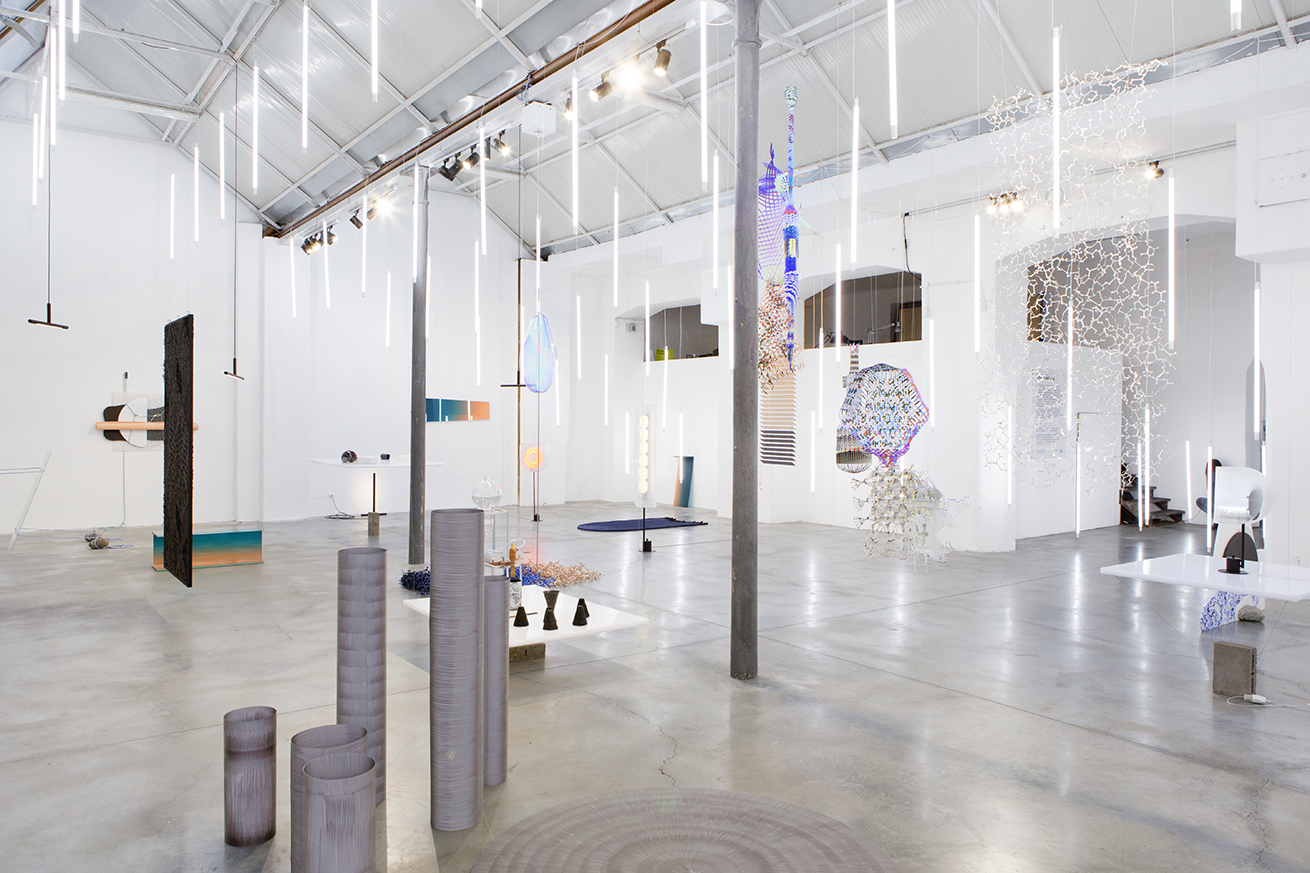
Dutch Invertuals, 2015

Dutch Invertuals, 2019
Nicole Uniquole
Another woman of stature in the design industry is Nicole Uniquole. In 2016, she organised her first Masterly at the Palazzo Turati. Italians queued up for hours to see the otherwise inaccessible palace from the inside, and, on the final day, for the 15,000 free tulips that had adorned the courtyard for a week. Of course, the majority came for the Dutch Design, including works by Edward van Vliet, Gispen, Ahrend, Royal Delft, Royal Tichelaar, Pepavana, Lizan Freijsen, Bo Reudler, Jesse Visser, and Rick Tegelaar. The second year featured more furniture brands, such as Leolux and Gelderland, but also Desso and De Ploeg, and, of course, many individual designers. Last year, a new Dutch lighting brand was launched at Masterly: JAPTH. The many rooms in the palace – with its beautiful parquet floors, wainscoting and ceilings, velvet drapes and huge oil paintings – are, to my mind, the most beautiful setting that the work of a designer could have. And, in ‘her’ palace, Nicole deserves to be the Queen of Dutch Design for a week. What a professional!
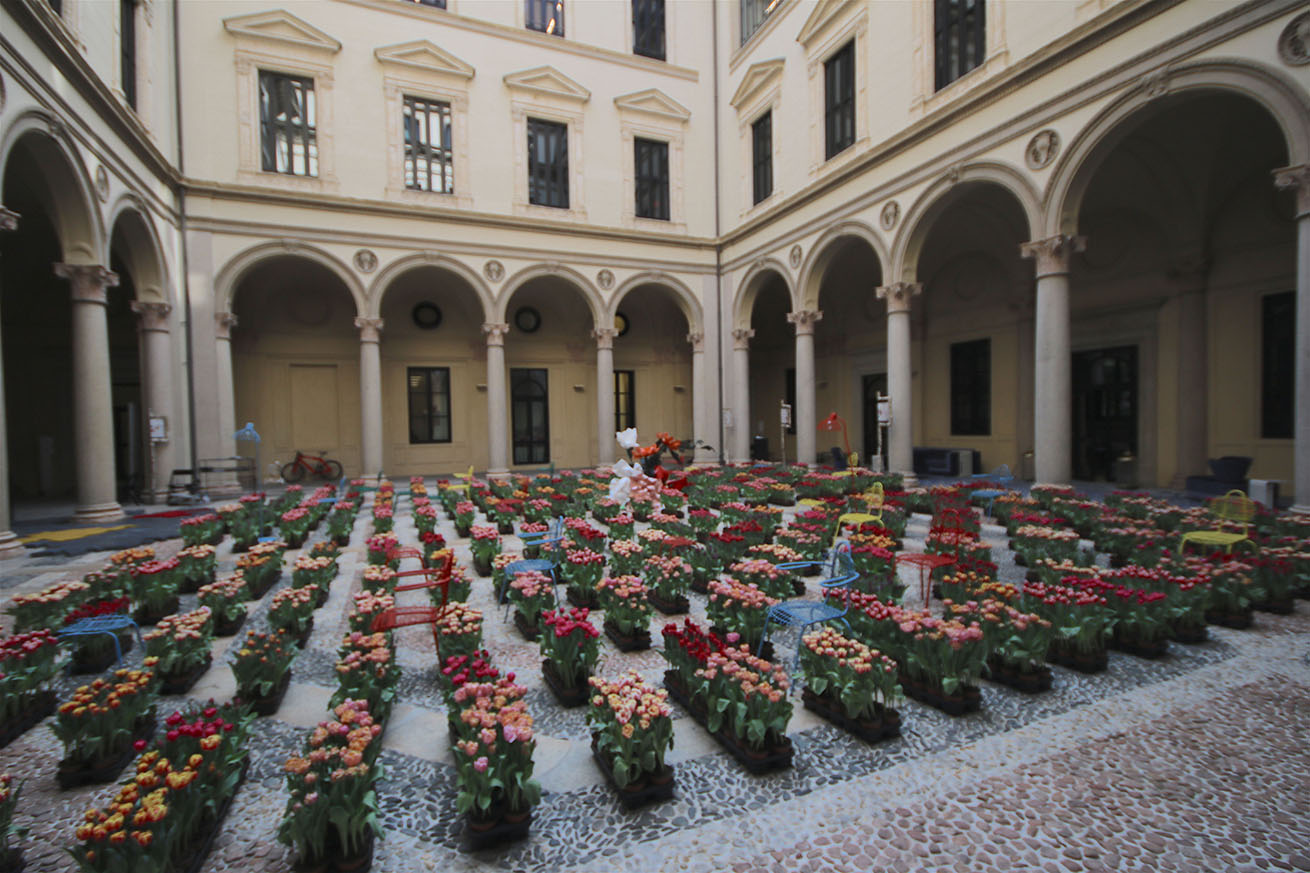
Court yard full of tulips at the first exhibition of Masterly – the Dutch in Milano in 2016.
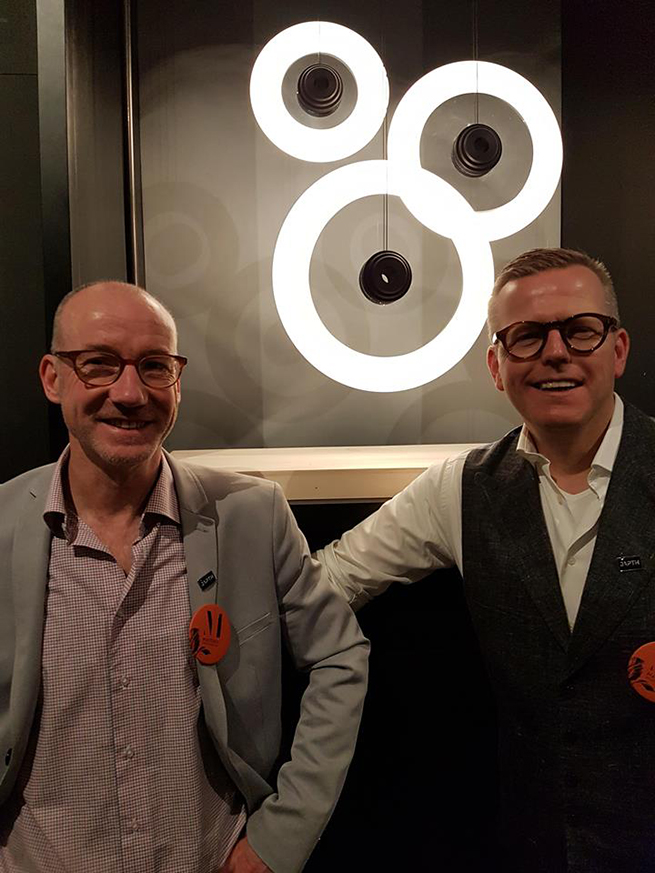
JAPTH 2018, Eduard Sweep and Aart van Rooij
Rossana Orlandi
Finally, one more Grand Lady of Design. A bit of a granny or mummy to many of Dutch designers, for whom she has had an eye and a weakness for many years – from Piet Hein Eek to Nacho Carbonell. It is, of course, ‘that tiny grey lady with the enormous glasses’: Rossana Orlandi, who puts together a wonderful presentation in her own spazio year after year. It is a shaded ‘hangout’ with many larger and smaller spaces in a former tie factory, full of works by mainly young designers. Li Edelkoort and Rossana Orlandi both have a talent for selecting the best talents worldwide and placing them in the international spotlight. I always reserve a whole afternoon for Rossana, so I can enjoy a delicious organic lunch in the garden, the lounge music, the sun, and spend some time chatting with the many designers, colleagues, and other people from the business that I always meet here.
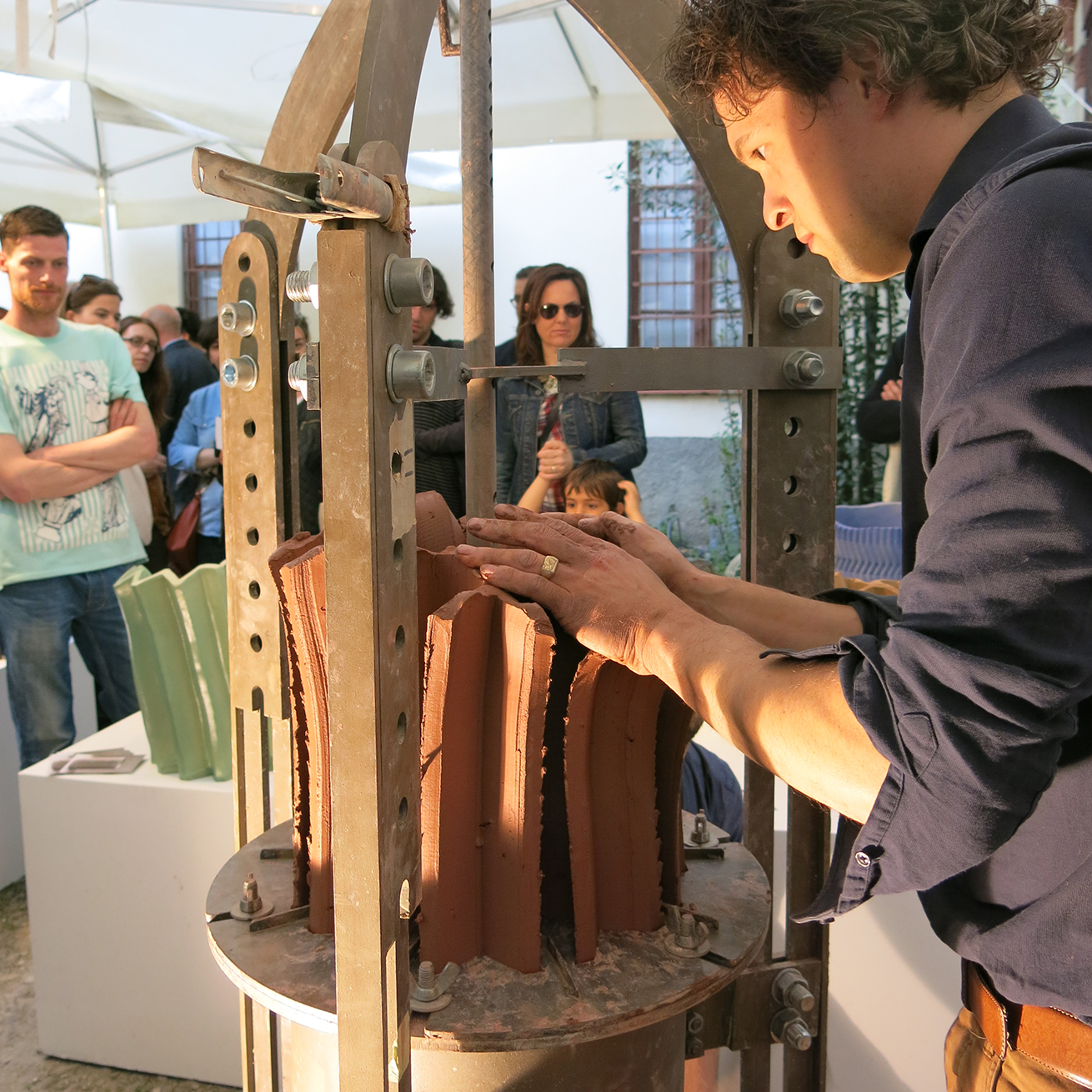
Floris Wubben, Rossana Orlandi, 2014
The zonas
For years, the ‘alternative’ Zona Tortona was the place for the most sensational shows. I remember claustrophobic moments on the little railway bridge, when the mass of people just wouldn’t budge. In Superstudio Più alone you could spend a good few hours. But about six years ago, a change really took place. No more big brands like Cappellini, Cassina, Flos, Diesel, and Foscarini, but rather an increasing mishmash in spaces that were far too small. The whole Zona Tortona was becoming more and more commercial: estate agents and local proprietors made money hand over fist during the period of the fair and demand (and receive) some 15 thousand even for a lousy basement. There no longer seemed to by any artistic direction or creative screening of any kind; the best spots were for those with the deepest pockets. Tortona became a playground for the marketing of the larger A-brands. In addition, there was beer for sale literally on every street corner (‘Heey fucker, beer one euro!’) and, at a certain point, there were even long rows of German beer tables in the streets. This quickly destroyed the soul of the Zona Tortona, leaving aside the fantastic shows by MOOOI, Envisions, Nendo, Design Language, and Tuttobene.
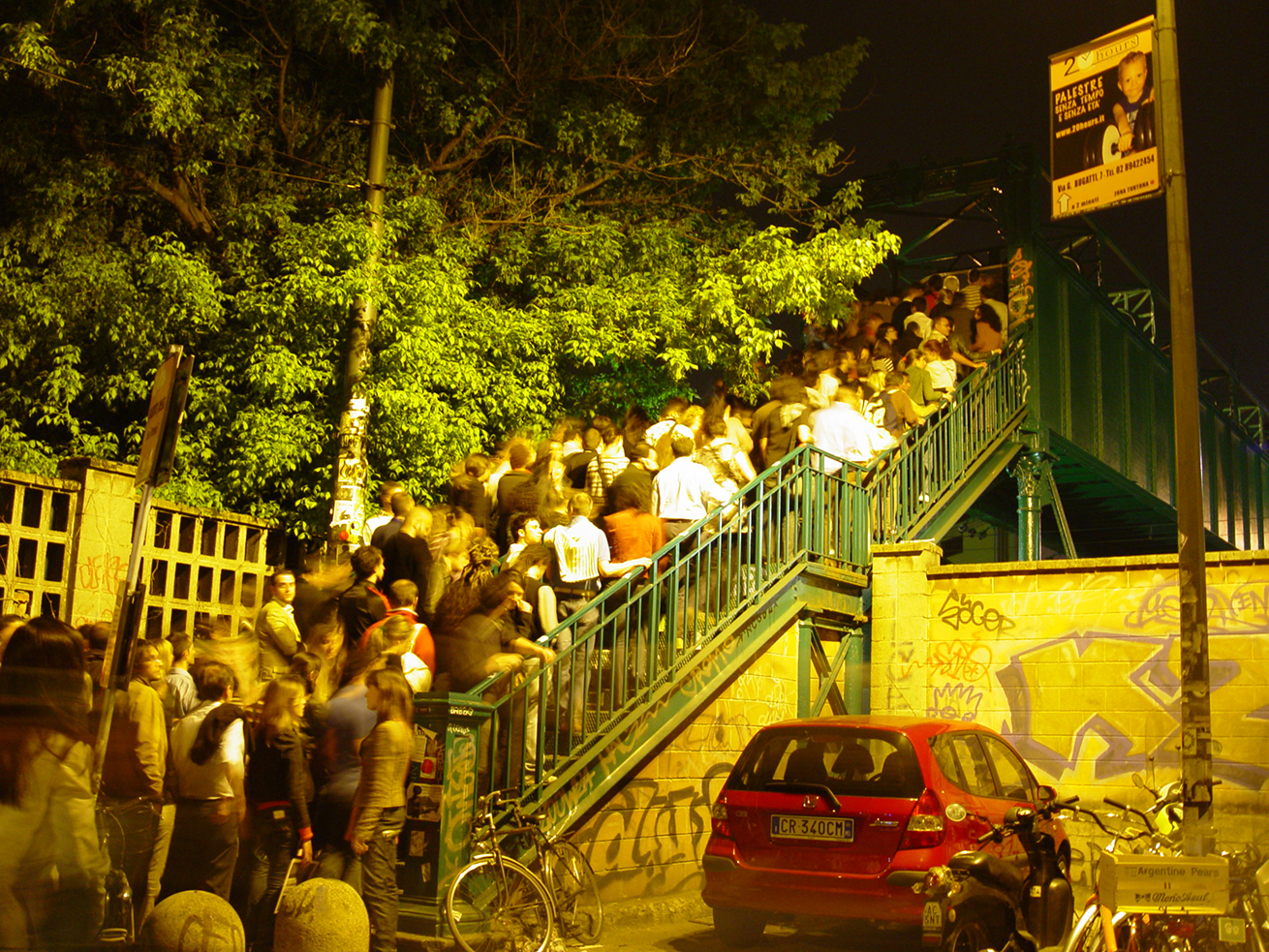
The famous bridge over the train tracks bringing the public to Via Tortona, 2011.

Autofficina at Ventura Lambrate, 2011

Ventura Lambrate, 2014
The shelf life of Dutch Design
Last year, Margriet Vollenberg organised the first Zona Future, at three locations in the Loreto district. It included over eighty exhibitors from thirty countries – Dutch, but just as many other nationalities and foreign design schools. Likewise, Tortona and Lambrate are no longer dominated by the exhibitions of the Dutchies. A few still believe in the rediscovery of the old zonas. Personally, I don’t. Although, of course, the new Ventura Future this year in Base, at the famous roundabout in Tortona, with even more (Dutch) participants, is an absolute must-see. I see the Dutch contribution to Milan disintegrating more and more. And perhaps even more pessimistic (or realistic): I think the shelf life of Dutch Design is becoming limited. Following the Italians and the Dutch, the Japanese could very well be the next wave. Of course, Issey Miyake, Comme des Garçons ons, Toshiyuki Kita, Naoto Fukasawa, Tokujin Yoshioka, and especially Nendo (Oki Sato) have been well known for many years. Names to watch include Isamu Noguchi, Soichiro Kanbayashi, Hiromichi Konno, and Daisuke Kitagawa. Rising stars from the land of the rising sun. And let’s not forget Scholten & Baijings, who for many years now have been collaborating with Japanese Karimoku, or the meaningful, often delicate work of ‘Dutch’ duo Boaz Cohen and Japanese Sayaka Yamamoto (BCXSY). They are researching forgotten crafts and are realising their ideas with craftspeople from all over the world. Their almost modest attitude has led to a poetic form language that gives you food for thought, again and again.

Tuttobene, 2010. In front of the porcelain cupboard by Marjan van Aubel. Photo by Ilco Kemmere
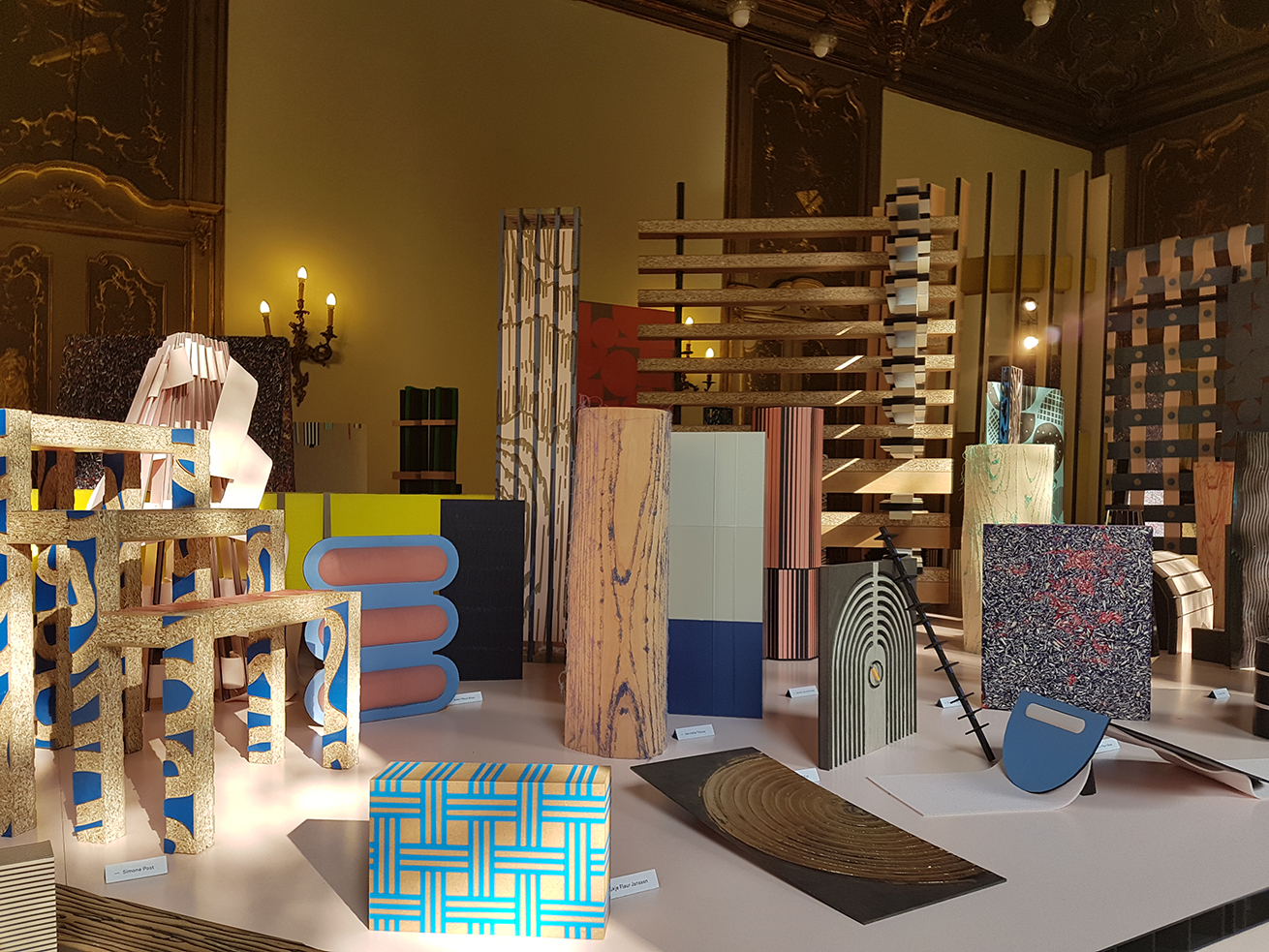
Envisions, 2017
Many Dutch designers are also in search of this authenticity. At the same time, the high-tech future is being embraced, with new, experimental, sustainable materials, and innovative techniques, like CNC milling and 3D printing. For these (Dutch) designers, there most certainly is a future; designers who are both thinkers and makers, authentic and involved, with ideas and designs that matter, relating to living and working, food and health, humans and animals. No more researching pioneers, but the experts in their field, be it a specific material, craft or technique. Experimentation and research continue to be the most important key to innovation, but then only in collaboration with the manufacturing industry and major international companies. Examples aplenty: IKEA and Piet Hein Eek, among others, Auping and RENS, Luxaflex and Dutch Invertuals, Finsa and Envisions, Forbo, Baars & Bloemhoff. Together, from process to progress. This Dutch Design is changing and leading to change, with a focus on ideas and solutions to the aesthetic, social, and economic challenges of today and tomorrow. Um, is that not exactly what Tuttobene had envisioned ten years ago?
Monique van Empel, March 2019
Other highlights
2010: Frederik Roijé’s chicken coop, complete with stuffed chickens and cackling. For me, it was the talk of the town.
2011: Tokujin Yoshioka’s Twilight exhibition in Moroso showroom, which was shrouded in a light mist, in between which only white furniture could be seen. Fairy-take-like and creepy at the same time.
2012: The Gravity Stool by Jolan van der Wiel. A fascinating demonstration.
2013: 10 years of Tuttobene (retro/perspective) with work by Floris Wubben, Kranen/Gille, Renate Vos, Dave Keune, Lizan Freijsen, and Van Joost, among others. And the show by Moooi, with fantastic XXL photos by Erwin Olaf.
2014: The Layers Cloud Chair by Richard Hutten for the exhibition honouring the 30-year anniversary of Kvadrat’s Divina fabric. The chair was made up of 545 layers of Divina fabric in approximately 100 colours, cut out using a CNC machine. The parties in this year were those of NLXL with Studio Job and 20 years of Linteloo.
2015: The 3D printed EGG by Michiel van der Kley. The largest community 3D print project ever, with 4760 unique ‘stones’ printed by hundreds of co-creators all over the world.
2016: The exhibition by Pieke Bergmans with Freeze; the melting ice cube of Swedish river water as a metaphor for human greediness and neglect of nature. Also beautiful: the Barovier&Toso exhibition in the large ‘nomad tent’.
2017: The solid presence of Ikea in Lambrate, including Swedish meatballs for lunch.
2018: The ‘movements’ by Nendo, again at Superstudio Più. Now with a miniature from the candy machine as the ultimate souvenir.
This interview was published in The Dots magazine nr. 16 and distributed during the Milan Design Week 2019.

